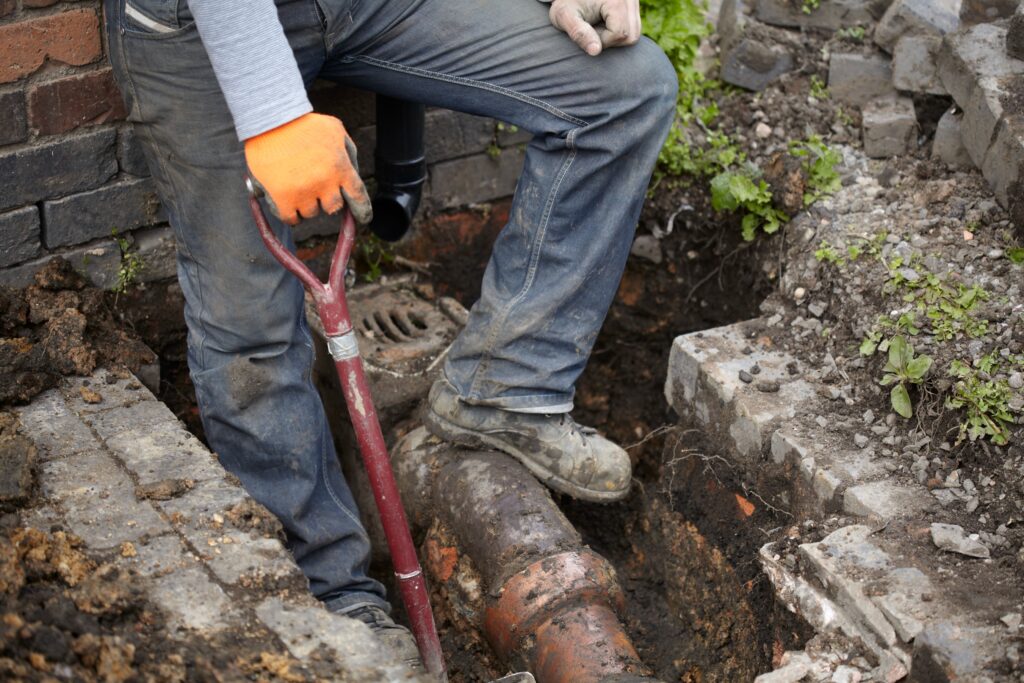Fix Your Sewer Problems
Sewer issues can disrupt daily life and pose serious health risks if not promptly addressed. Understanding common sewer line problems and knowing how to fix them is essential for homeowners to maintain a functional plumbing system. This comprehensive guide explores various sewer issues, their causes, and effective solutions to restore your sewer line’s integrity and prevent future problems.
Identifying Sewer Issues
Fixing sewer lines involves addressing a range of plumbing problems that affect the main sewer line responsible for transporting wastewater from your home to the municipal sewer system. These issues can arise due to various factors, including aging pipes, tree root infiltration, debris buildup, and structural damage. Whether it’s replacing sewer lines or determining the repair sewer line cost, understanding the causes and symptoms is essential. Common signs of sewer issues include:
-
Persistent Drain Clogs
Frequent or recurring clogs in multiple drains throughout your home indicate a potential sewer line problem. Clogs can result from debris buildup, grease accumulation, or foreign objects obstructing the sewer pipe.
-
Slow Draining Fixtures
Slow drainage in sinks, showers, or toilets is often caused by partial blockages or restrictions within the sewer line. This can lead to wastewater backups and potential overflows if not addressed promptly.
-
Foul Odors
Unpleasant odors emanating from drains or around your property may indicate sewer line issues, such as leaks, cracks, or stagnant wastewater within the pipes.
-
Sewage Backups
The most serious indication of a sewer issue is sewage backups into drains, toilets, or basement floor drains. This poses health risks due to exposure to contaminated water and requires immediate professional attention.
Fixing Sewer Lines
-
Professional Sewer Line Inspection
When facing sewer issues, starting with a professional sewer line inspection is crucial. A licensed plumber can use specialized cameras and diagnostic tools to inspect the sewer line’s condition and identify the problem’s root cause. This step is essential for accurate diagnosis and informed decision-making regarding repairs.
-
Clearing Blockages
For common sewer blockages caused by debris, grease, or tree roots, plumbers may use hydro-jetting or augers to clear the obstruction. Hydro-jetting involves using high-pressure water to blast away buildup and restore proper flow within the sewer pipe. Augers or drain snakes can mechanically break apart and remove blockages, allowing wastewater to flow freely.
-
Sewer Line Repair or Replacement
Depending on the severity of the sewer line issue, repairs may involve patching leaks, sealing cracks, or replacing damaged pipe sections. Trenchless sewer repair methods, such as pipe lining or pipe bursting, minimize disruption to landscaping and property while effectively resolving sewer line problems.
Common Sewer Line Problems
-
Tree Root Infiltration
Tree roots seeking moisture and nutrients can infiltrate sewer pipes through small cracks or joints, causing blockages and pipe damage over time. Cutting or removing tree roots and repairing affected sections of the sewer line can prevent recurring issues.
-
Pipe Corrosion
Older sewer lines made of materials like cast iron or clay may corrode or deteriorate over time, leading to leaks, collapses, or reduced flow capacity. Replacement with modern, durable materials like PVC or HDPE can provide long-term reliability and performance.
Preventative Maintenance
-
Regular Inspections
Schedule routine inspections of your sewer line by a qualified plumber to detect potential issues early and prevent costly repairs. Inspections are particularly important for older homes or properties with mature trees near sewer lines.
-
Proper Disposal Practices
Avoid flushing non-biodegradable items, grease, or chemicals down drains, as these can contribute to sewer line blockages and damage. Dispose of cooking oils and fats in the trash, and use drain screens or filters to capture hair and debris.
Conclusion
Addressing sewer issues promptly with professional assistance is essential for maintaining a safe and functional plumbing system in your home. By understanding common sewer problems, recognizing warning signs, and implementing preventative maintenance measures, homeowners can minimize the risk of costly repairs and ensure the longevity of their sewer lines. Consult a licensed plumber for accurate diagnosis and effective solutions tailored to your specific sewer issues. Stay proactive and informed to protect your home and family from the inconvenience and hazards of sewer problems.

